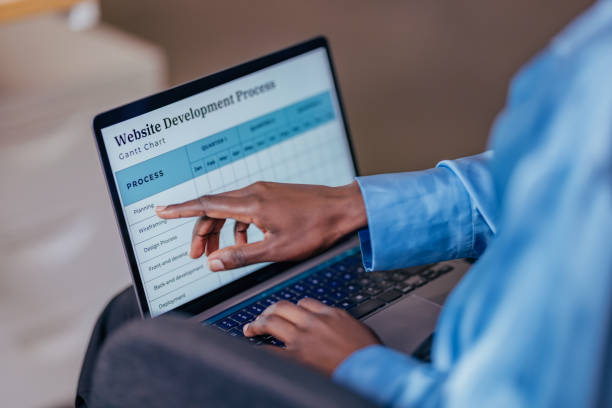Introduction and the Necessity of Expanding Global Markets

In today’s world, where geographical boundaries are blurring, #Access to Global Markets is of particular importance.
A #Website is your business’s main gateway to these vast markets.
But can your website communicate with audiences from different cultures and languages? The answer to this question lies in the importance of multilingual website design. Although many businesses focus on their domestic market, ignoring the enormous potential of international markets can lead to missing many opportunities.
With a multilingual website design, you will be able to convey your message to millions of people around the world, without language being a barrier.
This approach not only increases your #audience but also significantly helps strengthen the #trust and credibility of your brand on an international level.
Beyond a simple translation, comprehensive multilingual website design includes a deep understanding of cultural differences, regional preferences, and even local search methods.
Many internet users prefer to read content in their native language.
This is a statistical fact that ignoring it means losing a large portion of potential customers.
Multilingual website design allows you to meet this fundamental user need and provide them with a better user experience.
This not only means translating texts but also includes full localization of content, images, currencies, and date formats.
This kind of “explanation” about the importance and approach of international website design is the foundation for entering global markets. This crucial step distinguishes your business from competitors who operate in only one language and paves the way for sustainable growth on an international scale.
Today, successful global websites are virtually unimaginable without a strong multilingual website design strategy.
Do you know that a weak corporate website loses many opportunities for you daily? Solve this problem forever with professional corporate website design by Rasavab!
✅ Create a powerful and reliable image of your brand
✅ Attract targeted new customers and increase sales
⚡ [Get free website design consultation]
Unique Advantages of Multilingual Website Design for Modern Businesses
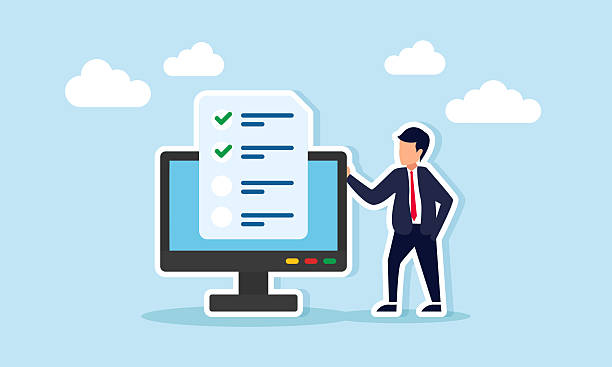
Multilingual website design has transformed from a luxury feature into a strategic necessity for any business seeking to expand its horizons.
One of its most prominent advantages is a significant increase in audience reach. By providing content in different languages, you will be able to target new market segments that were previously difficult to access due to language barriers.
This means increased website traffic and, consequently, more sales opportunities and revenue.
Furthermore, SEO improvement is another direct and powerful result of multilingual website design.
Search engines rank multilingual websites for local and international searches in various languages.
By correctly using hreflang tags and international SEO strategies, your website can appear in search results in different countries and attract more visitors.
This is an “analysis” of the reciprocal impact of website design and search engine optimization that contributes to organic growth.
Building trust and increasing brand credibility are also key advantages. When a business strives to communicate with its audience in their native language, a sense of trust and loyalty is strengthened.
This demonstrates respect for the customer’s culture and needs, which in turn increases your brand’s global credibility and introduces you as an international and customer-centric company.
Finally, the competitive advantage gained from multilingual website design is also undeniable.
In highly competitive markets, any advantage can make a difference.
A website available in multiple languages can attract customers that your competitors cannot.
This not only increases your market share but also allows you to quickly establish your position in new markets.
This is important “guidance” for businesses looking to outperform competitors on the global stage and benefit from a multilingual website.
Challenges and Solutions for Implementing Multilingual Website Design
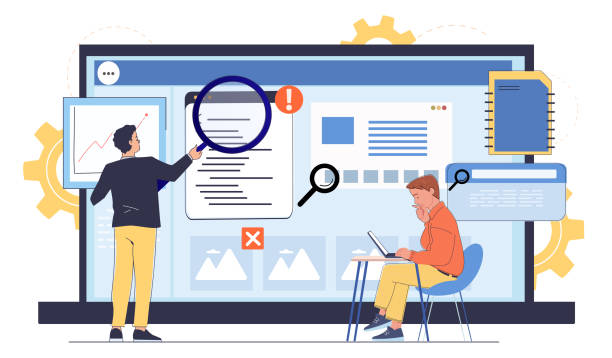
Implementing a multilingual website design, despite its numerous advantages, comes with specific challenges that require careful planning and specialized solutions.
The first and perhaps most critical challenge is the quality of content translation. Machine translation often fails to convey cultural nuances and specific linguistic idioms, leading to misunderstanding or even damaging brand credibility.
The solution is to use native and specialized translators in your field of work.
Localization goes beyond simple word translation; this process involves adapting content to cultural norms, currencies, date and time formats, and even images to create a sense of familiarity and comfort for the user.
This “technical” part of the process is the key to the success of your multilingual website.
Another challenge is technical management and URL structure. Choosing between subdomains, subdirectories, or Country Code Top-Level Domains (ccTLDs) can significantly impact SEO and site management.
For example, example.com/fr for France (subdirectory) or fr.example.com (subdomain).
Using hreflang tags for search engines is essential to display the correct language version to users.
The complexity of SEO for multilingual sites is also a significant challenge. Keyword research must be done separately for each language and region, as popular keywords in one language may differ in another.
Additionally, content maintenance and updates in multiple languages can be time-consuming and costly.
A suitable Content Management System (CMS) that supports multilingual capabilities can facilitate this process.
Another important issue is budget and time management. Multilingual website design and its localization require a significant investment in time and resources.
Careful planning and allocating sufficient budget for translation, development, and maintenance are essential.
However, the return on investment from accessing new markets and increasing customers usually justifies these costs.
This is “guidance” for facing potential problems.
Below is a table comparing the most common structural methods in multilingual website design:
| Implementation Method | URL Example | Advantages | Disadvantages |
|---|---|---|---|
| Subdirectories | example.com/fr/ |
Stronger SEO (main domain authority), easier management | Requires precise localization, complexity for many languages |
| Subdomains | fr.example.com |
Easy content separation, ability to host on local servers | Requires separate SEO for each subdomain, may benefit less from main domain authority |
| Country Code Top-Level Domains (ccTLDs) | example.fr |
Best option for local SEO, increased trust from local users | High cost, more complex management, requires purchasing and maintaining multiple domains |
Choosing the Best Strategy for Multilingual Website Design

Choosing the right strategy for multilingual website design is one of the key decisions that impacts the long-term success of your project.
As mentioned in the previous section, there are three main technical implementation methods: subdirectories, subdomains, and Country Code Top-Level Domains (ccTLDs).
Each of these methods has its own advantages and disadvantages, and their selection should be based on your business objectives, budget, and available resources.
This is an “educational” topic that requires precision in initial selection.
Subdirectories (e.g., yoursite.com/fr/) are often considered a popular and preferred option, especially from an SEO perspective.
This is because all language versions are located under one main domain and inherit the main domain’s SEO authority.
This method is suitable for businesses that want centralized management and have a limited budget.
On the other hand, subdomains (e.g., fr.yoursite.com) can be useful for logical content separation and the possibility of hosting on local servers (which can help with loading speed).
However, each subdomain may be treated as a semi-independent website by search engines and require separate SEO efforts.
Country Code Top-Level Domains (ccTLDs) like .fr or .de (e.g., yoursite.fr) are the best option for targeting a specific country and build the highest level of trust among local users.
But this method is the most complex and costly option, as it requires purchasing and managing multiple domains and potentially hosting on different servers.
This strategy is usually recommended for large companies with a strong physical presence in various countries.
It is important to conduct a thorough analysis of your target market, financial resources, and available technical resources before making a final decision. Consulting with SEO and web development specialists in multilingual website design can be helpful in this critical choice and prevent costly and incorrect decisions.
Every strategy requires content localization and adherence to international SEO principles, regardless of the technical structure chosen.
This is a “comprehensive overview” of the available options to help you choose the best path for implementing a multilingual website.
Do you dream of a thriving online store but don’t know where to start?
Rasavab is your comprehensive e-commerce website design solution.
✅ Attractive and user-friendly design
✅ Increased sales and revenue⚡ Get free consultation
SEO Optimization for Multilingual Sites and the Role of the hreflang Tag
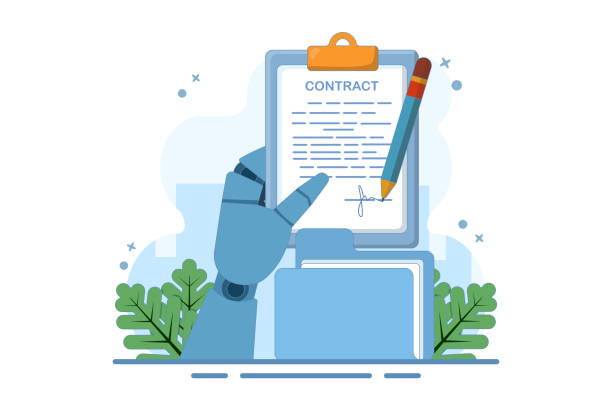
Search Engine Optimization (SEO) for a multilingual website design has its own complexities that go beyond traditional SEO.
The main goal is for search engines to recognize the different language versions of your website and display the correct version to the relevant users (based on language or geographical location).
This is where the role of the hreflang tag becomes crucial.
The hreflang tag tells search engines which version of a page is intended for which language or geographical region. Incorrect use of this tag can lead to duplicate content issues and harm your rankings.
This is a “technical” and essential aspect of optimization.
In addition to hreflang, keyword research for each language is also of utmost importance.
Keywords that are popular in one language may not be relevant or have a different meaning in another.
Therefore, it is necessary to conduct separate and precise keyword research for each language version of your website.
This includes understanding the search culture and common terminology in each region.
Also, internal and external link building must be carefully managed.
Ensure that internal links point to the correct language versions and strive to acquire backlinks from reputable websites in each country or language.
This will increase your website’s credibility in those regions.
Localized content is not only more appealing to users but also beneficial for SEO.
Content that is specifically translated and adapted for a target market is likely to perform better in search results.
Remember that website loading speed and responsiveness are also important for international SEO, as users in different regions may use different devices or internet connections.
Finally, continuous monitoring of SEO performance in each language and making necessary adjustments based on data is key to sustained success in multilingual website design and international markets.
This is a step-by-step “guide” to ensuring your website is visible to millions of global users.
Content Management and Translation in Multilingual Website Design

Content management and the translation process are two main pillars in the success of a multilingual website design.
Without an efficient strategy for these two areas, your website may face issues such as content inconsistency, poor translations, or costly updates.
Choosing an appropriate Content Management System (CMS) that has built-in multilingual capabilities or can be extended through plugins is crucial.
CMSs like WordPress (with plugins such as WPML or Polylang), Drupal, or Shopify offer options for easy management of multiple languages.
This “educational” aspect helps you choose the right infrastructure.
The translation process must be carried out with high precision and quality.
The use of professional and native translators who are familiar with the specialized topics of your industry is essential.
Machine translation can be a useful initial tool, but for important and sensitive content, human review and editing are absolutely necessary to ensure accuracy, precision, and preservation of brand tone.
Localization goes beyond translating words; it includes adapting images, colors, symbols, and even jokes or idioms to the target culture.
For example, a specific color in one culture may have a different meaning in another.
This cultural sensitivity is the distinguishing feature of a successful multilingual website.
In addition to initial translation, planning for regular content updates across all languages is vital.
This requires a clear workflow for creating, translating, and publishing new content.
It may be necessary to assign teams for each language or region to ensure content remains fresh and relevant.
Automating some steps, such as notifying translators of content updates, can help improve efficiency.
Ultimately, content management in a multilingual website design requires continuous commitment to quality and consistency to provide a seamless and positive user experience for all visitors, regardless of their language.
This section is an “explanation” that covers the operational details of content management.
User Experience and User Interface Design in Multilingual Website Design

User Experience (UX) and User Interface (UI) design play a crucial role in the success of a multilingual website design.
Seamless and optimized design for users from different cultures and languages requires a deep understanding of cultural, visual, and even text direction differences.
The first step is to design a user interface that offers flexibility for different languages. For example, right-to-left languages (like Persian and Arabic) require changes in layout and orientation of elements.
This means that menus, columns, and images must be adjusted to suit text direction from right-to-left or left-to-right.
This “technical” aspect of design cannot be easily overlooked.
The selection of fonts and colors must also be done carefully.
Some fonts may not be sufficiently readable in specific languages or may carry particular cultural meanings.
Colors also have different meanings in different cultures; a color that symbolizes joy in one culture might represent mourning in another.
Therefore, a multilingual website designer must be aware of these subtleties and use color combinations and fonts that are culturally neutral or appropriate for all target markets.
This can be an “engaging” yet challenging experience for the design team.
Date, time, currency, and unit of measurement displays must also be localized.
Displaying prices in local currency and using date and time formats common in that country gives the user a greater sense of trust and comfort.
Also, ensuring that all interactive elements such as forms, buttons, and error messages are correctly translated and placed appropriately is essential.
Designing easy and intuitive navigation that allows users to change the language easily (usually via a button or dropdown menu in the upper corner) is another key aspect of multilingual website design.
An optimal user experience on a multilingual website goes beyond mere translation; it means intelligent redesign for each audience.
The table below highlights some important UI/UX considerations for different languages:
| Design Element | Considerations for RTL languages (e.g., Persian) | Considerations for LTR languages (e.g., English) |
|---|---|---|
| Text Direction and Layout | Right-to-left, menus and navigation elements to the right | Left-to-right, menus and navigation elements to the left |
| Images and Icons | Images with appropriate orientation (e.g., arrows pointing left) | Images with appropriate orientation (e.g., arrows pointing right) |
| Text Box Size | Sufficient space for longer Persian/Arabic words | Standard space for English/Latin words |
| Color Selection | Colors with positive and culturally accepted meanings | Colors with positive and culturally accepted meanings |
Continuous Maintenance and Updates of Multilingual Websites
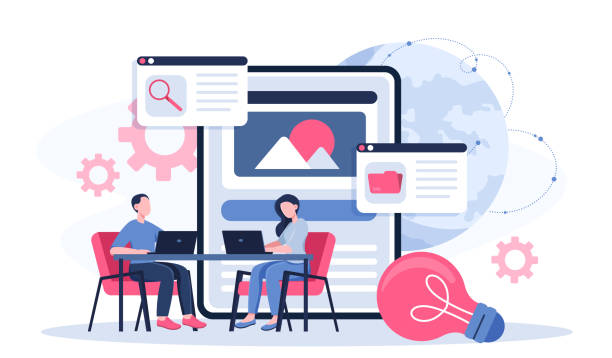
After the multilingual website design phase is completed and launched, the work does not end; rather, the phase of continuous maintenance and updates begins, which is of particular importance.
A dynamic website is always changing and adding new content.
Ensuring that all language versions are updated simultaneously and with the same quality is a fundamental challenge.
Lack of coordination in content updates can lead to outdated information in one language and new information in another, which severely impacts user experience and can harm brand credibility.
This is an “ongoing” task that requires an experienced team.
One of the most important aspects of maintenance is managing new translations and edits. An efficient Content Management System (CMS) that provides change tracking and version management capabilities is very useful at this stage.
There must be a clear workflow for submitting new content to translators, reviewing it, and publishing it in all languages.
In addition to content, technical issues also require continuous monitoring. Ensuring the correct functioning of hreflang tags, proper operation of the language switching system, page loading speed in different geographical regions, and compatibility with search engine updates are all items that should be regularly checked.
Using website and SEO monitoring tools to identify and resolve potential problems is essential.
User feedback is also a valuable source for continuous improvement.
Listening to comments and suggestions from users of different cultures and languages can help identify weaknesses in translation, design, or website performance.
Conducting surveys or providing easy communication channels for users to report issues can be very effective in this regard.
Active maintenance and updates of a multilingual website ensure its longevity and effectiveness in the long term. This section is a “guide” for maintaining the quality and performance of the site after launch and shows that multilingual website design is a continuous process, not a one-time project.
Is your e-commerce site ready to attract maximum customers and increase sales? Rasavab revolutionizes your online business with modern and efficient e-commerce website designs.
✅ Increased speed and improved SEO
✅ Excellent user experience on mobile and desktop⚡ Get free e-commerce website design consultation from Rasavab!
The Future of Multilingual Website Design and Emerging Trends

The future of multilingual website design is evolving with the emergence of new technologies and changes in user behavior.
One of the most important emerging trends is the growing role of Artificial Intelligence (AI) in translation and localization. While machine translation still cannot fully replace human translation, its accuracy has significantly increased with advancements such as Natural Language Processing (NLP) and deep learning.
These technologies can help accelerate the initial content translation process and reduce costs, while human translators focus on nuances and final localization.
This is a “matter of debate” regarding how much AI can replace human labor.
Another trend is the increasing importance of voice and conversational search.
With the popularity of voice assistants like Siri, Alexa, and Google Assistant, users are increasingly using voice commands to search for information.
This requires optimizing content to answer questions asked in different languages and with various accents.
Multilingual website design in this area must be able to understand and respond to these new search patterns.
Also, personalization of content based on user’s geographical location and language, without the need for manual language selection, will become a key trend.
By using location data and browser preferences, websites will be able to automatically provide the most relevant language content to the user.
This significantly improves user experience and reduces the need for user intervention.
The use of blockchain technology for transparency and security in international payment processes can also be relevant in multilingual website design that includes online stores.
This “analysis” of the future shows that multilingual website design is transforming into a smarter and more integrated system that automatically responds to the needs of global users and brings businesses closer to international markets.
Investing in these emerging trends will guarantee competitiveness in the future.
Conclusion and Next Steps towards Globalization with Multilingual Website Design

Ultimately, multilingual website design is no longer an option but a strategic necessity for any business seeking to grow and expand in global markets.
This process not only allows you to connect with a wider audience but also leads to increased brand credibility, improved international SEO, and the creation of a sustainable competitive advantage.
In this article, we examined various aspects of this topic, from the advantages and challenges of implementation to the importance of SEO, content management, and user experience in a multilingual environment.
Each of these sections requires careful attention and comprehensive planning to ensure that your website is not only available in different languages but also effectively aligns with the cultures and expectations of each target market.
This is a comprehensive “explanation” that reviews all important points.
The next steps for you, seeking to implement or improve your multilingual website design, include the following: First, in-depth research into your target markets and the languages you wish to support. This includes understanding the cultures, user preferences, and search behaviors in each region.
Second, choosing an appropriate technical strategy (subdirectory, subdomain, or ccTLD) that aligns with your goals and resources.
Third, investing in high-quality translation and localization, using native translators and appropriate translation management tools.
Fourth, optimizing SEO for each language using hreflang tags, local keyword research, and correct internal linking structure.
And finally, continuous monitoring and maintenance of the website, including content updates, resolving technical issues, and analyzing user feedback, to ensure optimal performance and provide an exceptional user experience.
Multilingual website design is an ongoing journey, not a final destination.
With strategic planning and commitment to quality, your business can transcend geographical boundaries and achieve remarkable success on the global stage.
This final “guide” is your roadmap for this exciting journey to truly go global.
Frequently Asked Questions
| Question | Answer |
|---|---|
| 1. What is multilingual website design? | The process of creating a website whose content is available in multiple languages so that users from around the world can interact with the site in their own language. |
| 2. Why should we make our site multilingual? | To expand the market, attract international audiences, improve SEO in global search results, and enhance brand credibility and professionalism. |
| 3. What are the methods for implementing a multilingual site? | Using subdomains (e.g., fa.example.com), subdirectories (e.g., example.com/fa/), URL parameters (e.g., example.com?lang=fa), or country-code domains (e.g., .ir, .de). |
| 4. Is multilingual site SEO different? | Yes, it requires international SEO strategies such as using the hreflang tag, appropriate URL structure for each language, and keyword research for each language. |
| 5. What points should be considered when choosing languages? | Languages should be chosen based on the target market, audience demographics, and current website traffic analysis data. |
| 6. What are the common problems in multilingual website design? | Problems related to SEO, translation quality, content management, right-to-left (RTL) and left-to-right (LTR) support, and user experience. |
| 7. What is the role of CMS in multilingual sites? | Modern Content Management Systems (CMS) (such as WordPress with multilingual plugins or Drupal) offer built-in features or powerful plugins for easy content management in multiple languages. |
| 8. How should content translation be done? | Translation should be done by native and professional translators, not just machine translation, to ensure local tone, culture, and terminology are respected. |
| 9. How is language switching done on multilingual sites? | Typically, a Language Switcher is used in the site’s header or footer, allowing users to easily select their desired language. |
| 10. Is responsive design important for a multilingual site? | Yes, responsive design ensures that the site is displayed correctly on any device (mobile, tablet, desktop), which is crucial for international user access and SEO. |
and other services of Rasavab Advertising Agency in the field of advertising
Smart Brand Identity: A professional solution for campaign management focusing on using real data.
Smart Custom Software: A professional solution for online growth focusing on marketing automation.
Smart Conversion Rate Optimization: A combination of creativity and technology to increase site visits through attractive UI design.
Smart Social Media: Designed for businesses seeking online growth through SEO-driven content strategy.
Smart Marketing Automation: An effective tool for user engagement through user experience customization.
And over a hundred other services in the field of internet advertising, advertising consultation, and organizational solutions
Internet Advertising | Advertising Strategy | Advertorial
Resources
Multilingual Website Design and Its AdvantagesMultilingual Site SEOThe Importance of Multilingual Website DesignHow to Build a Multilingual Website?
? To achieve peak success in the digital world, Rasavab Afarin is with you, offering professional responsive website design and digital marketing services.
📍 Tehran, Mirdamad Street, next to Bank Markazi, Southern Kazeroon Alley, Ramin Alley, No. 6

